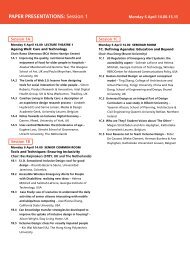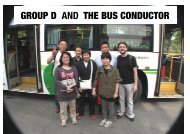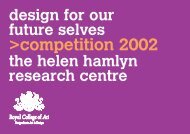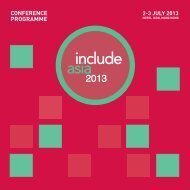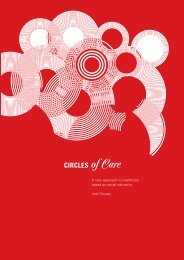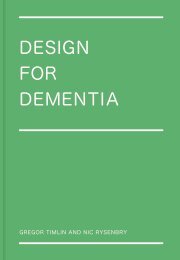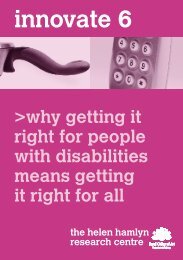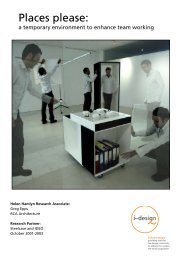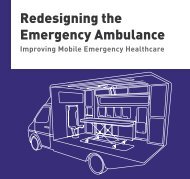Download In The Shade PDF here (3.8MB) - Helen Hamlyn Centre ...
Download In The Shade PDF here (3.8MB) - Helen Hamlyn Centre ...
Download In The Shade PDF here (3.8MB) - Helen Hamlyn Centre ...
Create successful ePaper yourself
Turn your PDF publications into a flip-book with our unique Google optimized e-Paper software.
MARK CONTEXT MAJOR<br />
<strong>The</strong> importance of good lighting in the urban environment<br />
cannot be underestimated. Not only can it help us feel safe<br />
and secure but also make a significant contribution to social<br />
cohesion and economic progress.<br />
Ever since the industrialisation of light in Britain at the end<br />
of the 19th century we have always employed the very latest<br />
technology to help extend the day. Whilst this was initially<br />
done through limited but organised systems of gas lighting,<br />
the on-going development of electric light in the 20th century<br />
enabled us not only to illuminate all our streets but also<br />
buildings, bridges, monuments, landscaped areas, signs and<br />
billboards – the very fabric of our cities – and all on a grand<br />
scale. This has had the effect of making the public realm ever<br />
more visible and accessible after dark, profoundly changing<br />
the way we use both public and private space, particularly<br />
during the winter months.<br />
<strong>The</strong> rapid development of urban lighting has brought many<br />
positive benefits, but such change has come with<br />
consequences. Not only have we seen the skies become<br />
polluted with light, blocking out the view of night sky and<br />
creating unwanted impacts on bio-diversity, but with growing<br />
concerns about climate change lighting has come into<br />
sharp focus as a considerable consumer of energy. <strong>In</strong>deed<br />
the impact of ‘over-illumination’ is now under scrutiny and<br />
questions have begun to be asked as to why we need to<br />
use so much light and what the long-term effect will be on<br />
our wellbeing.<br />
<strong>The</strong> value of darkness is also in the process of being<br />
carefully reassessed. We have seen lighting used to great<br />
effect in our city centres, but the same cannot always be said<br />
for outlying districts and residential neighbourhoods w<strong>here</strong><br />
systemic under-investment and poor practice has resulted<br />
in a perception that the streets are not always a safe place<br />
to be after dark.<br />
With the shift from more traditional forms of electric lighting<br />
such as incandescent, fluorescent and discharge lighting<br />
to the solid-state world of light-emitting diodes (LEDs), the<br />
possibility of not only creating high quality public lighting<br />
whilst using considerably less energy but also better directing<br />
and controlling that light, offers new and exciting possibilities.<br />
To that end the research and development being carried out<br />
into this area by the RCA’s <strong>Helen</strong> <strong>Hamlyn</strong> <strong>Centre</strong> for Design<br />
and Megaman, as represented by this book, is most timely<br />
in that it addresses some very fundamental questions.<br />
How can light be used more progressively in the public realm,<br />
and in particular in our neighbourhoods How can we create<br />
a truly sustainable approach to lighting development in which<br />
we realise the social and economic benefits good lighting can<br />
bring whilst mitigating the environmental impacts How do<br />
we use rapidly advancing lighting technology to create new,<br />
exciting, useful and viable products that can help move us<br />
away from the purely functional delivery of light And how can<br />
we create a better understanding around the subject of light<br />
2



